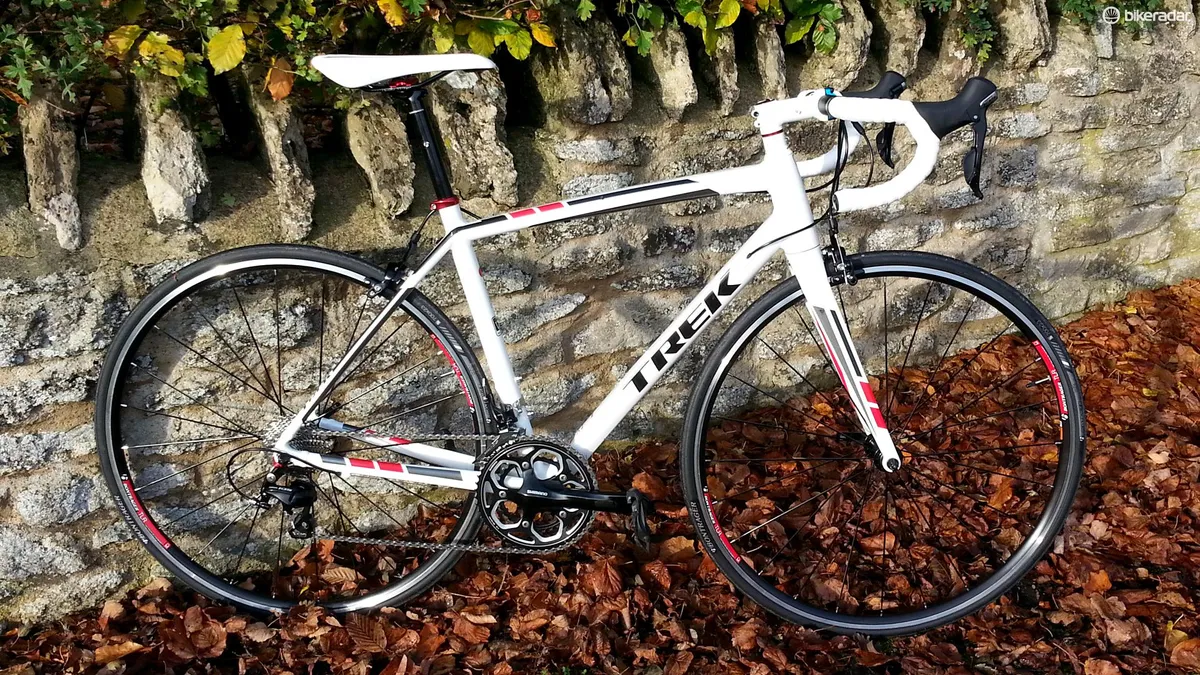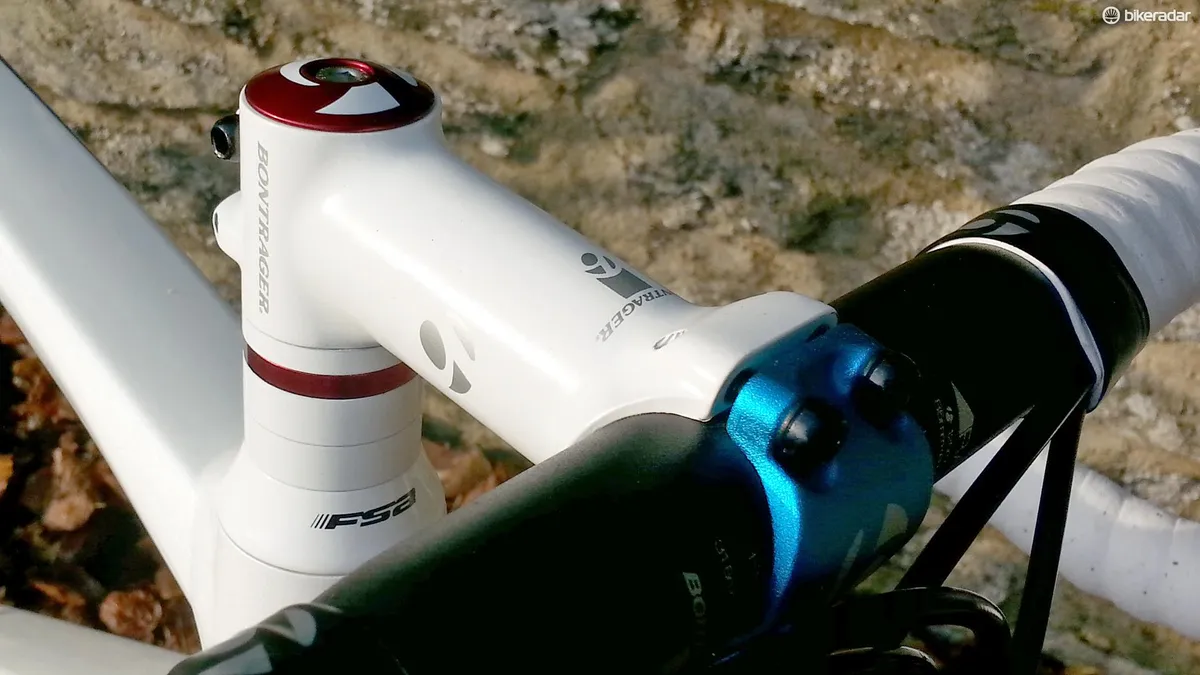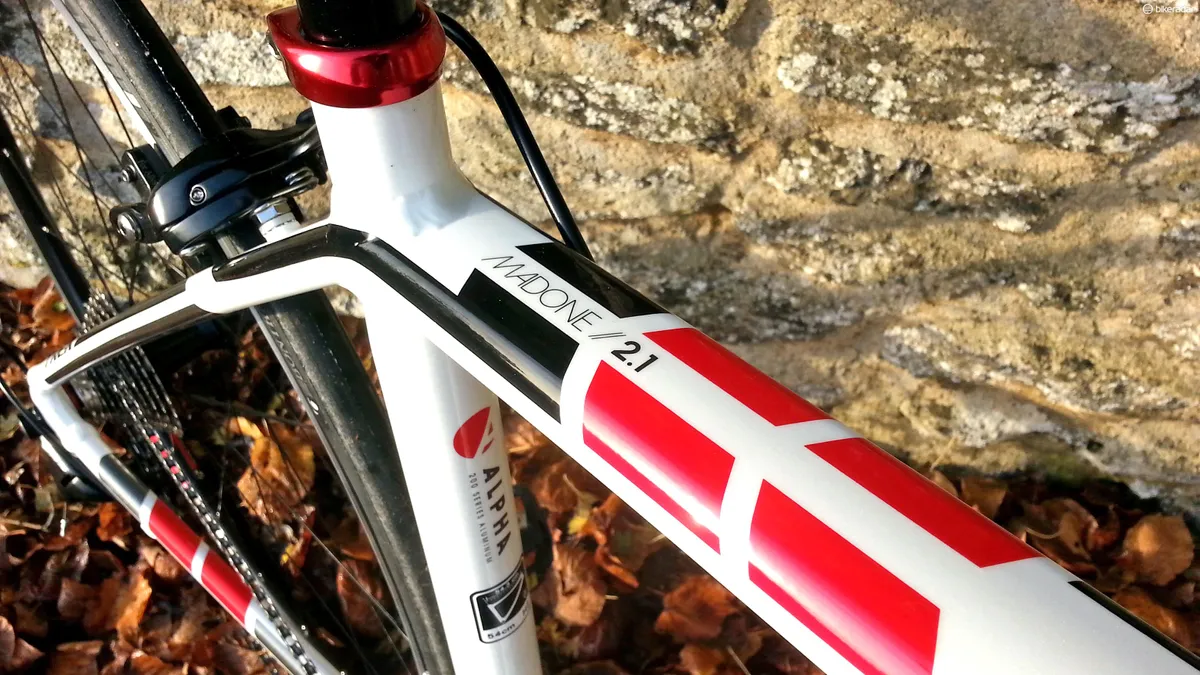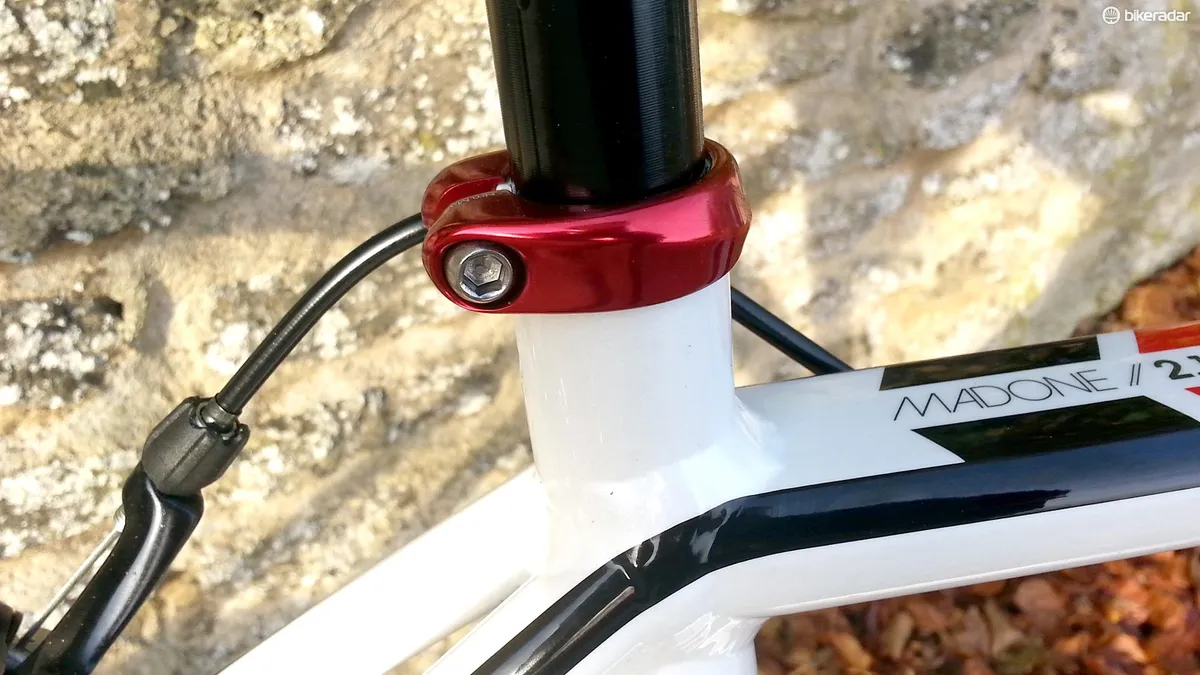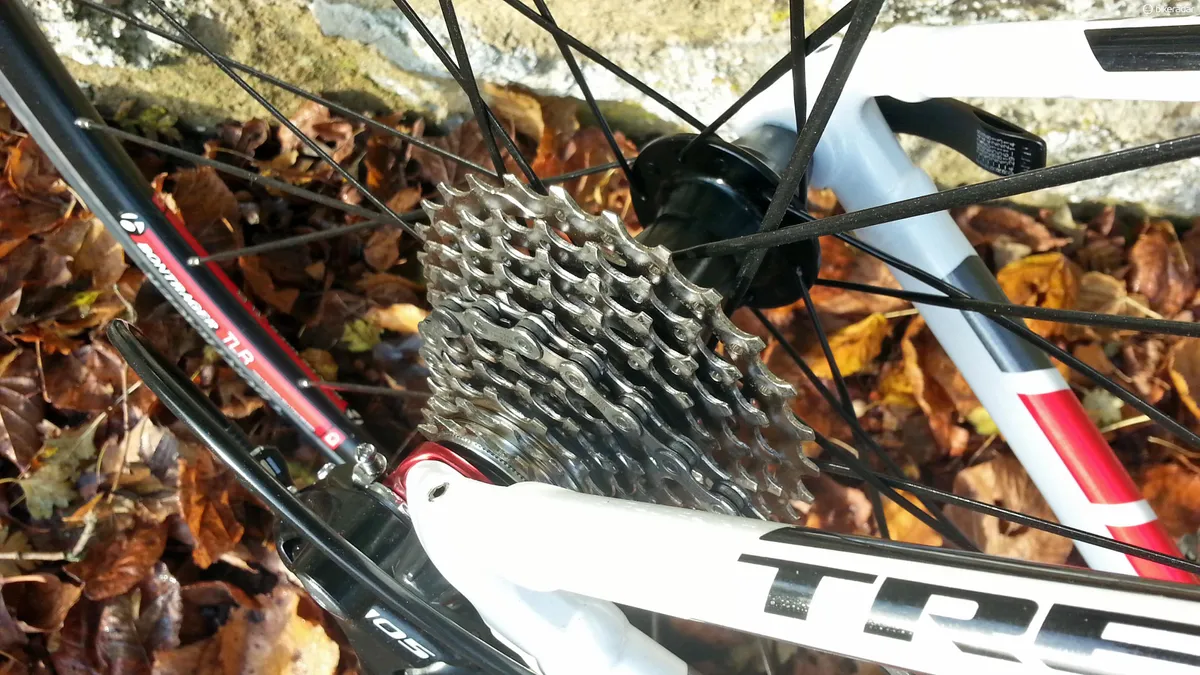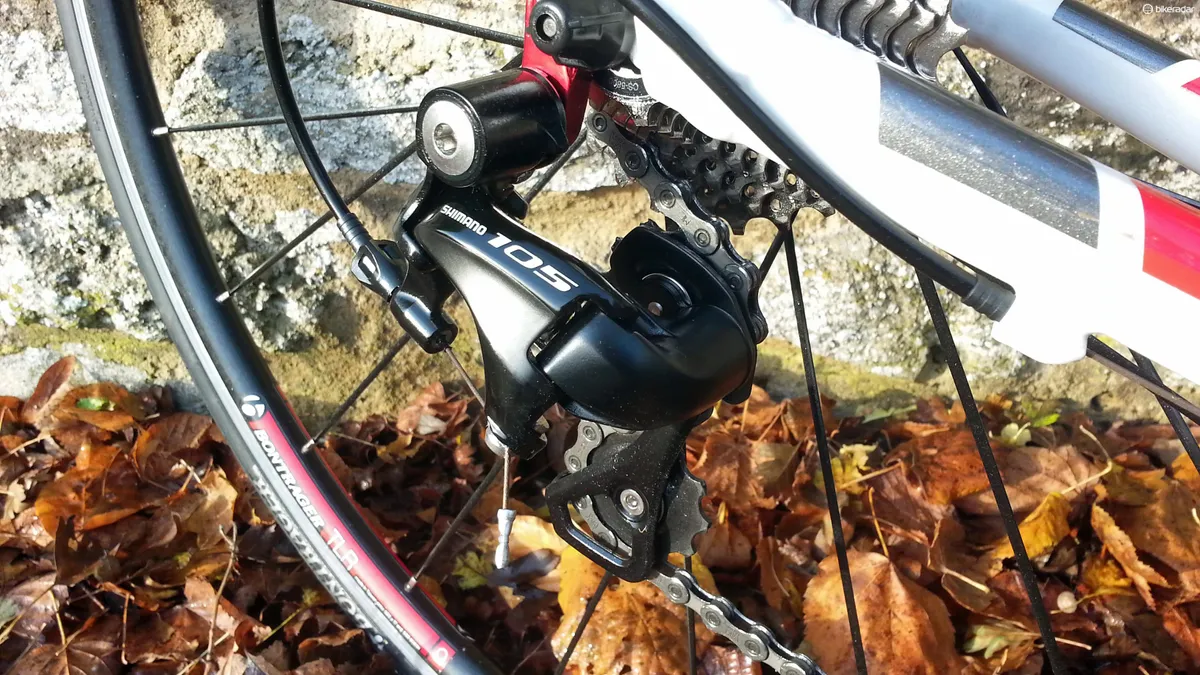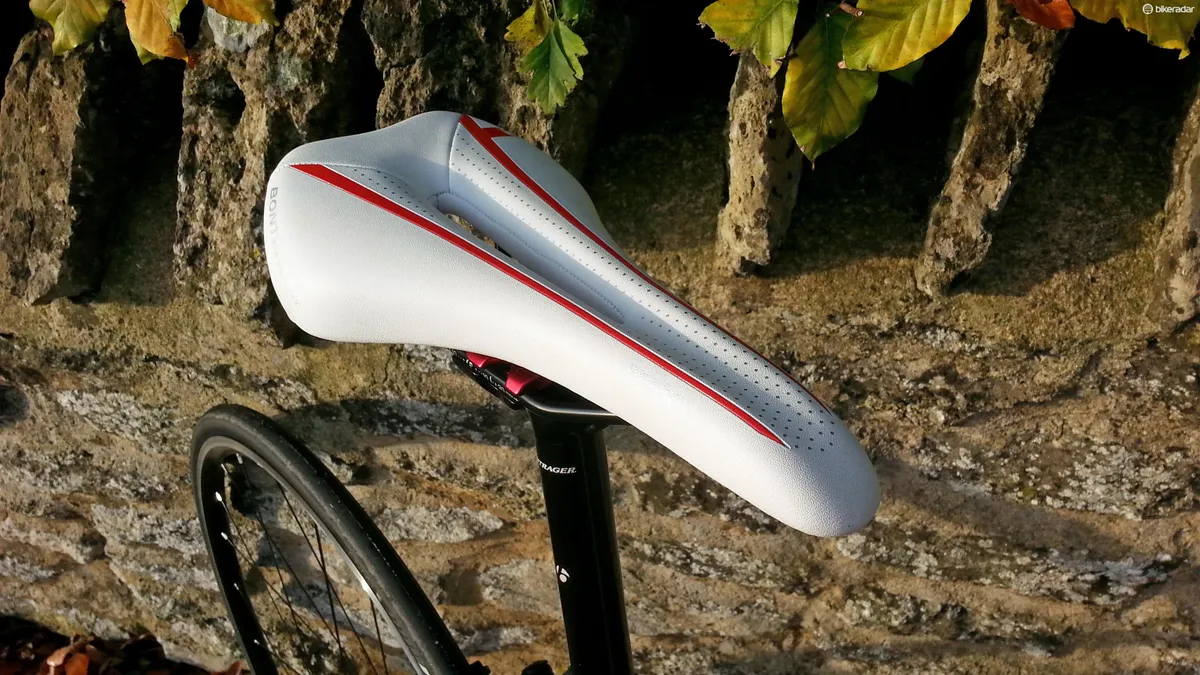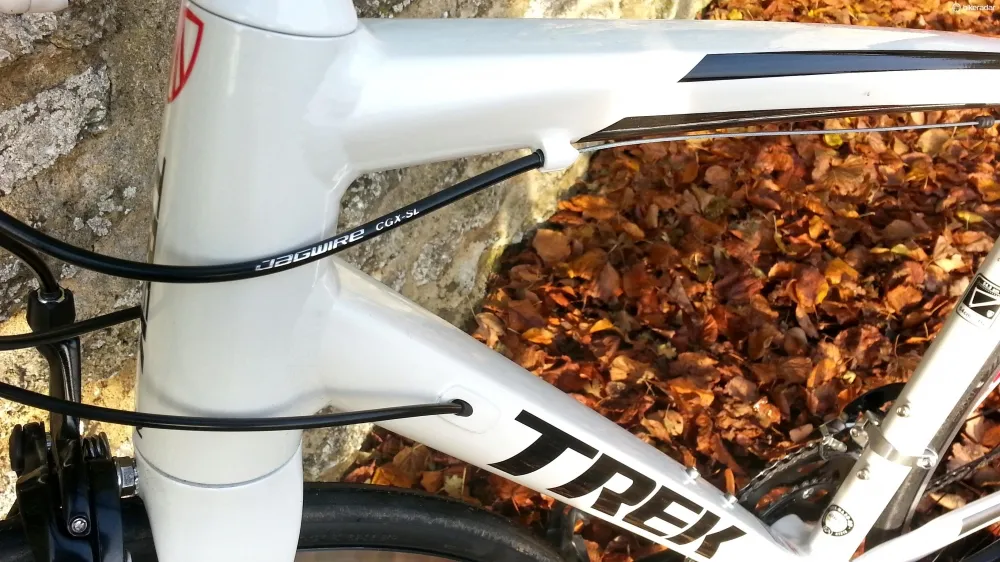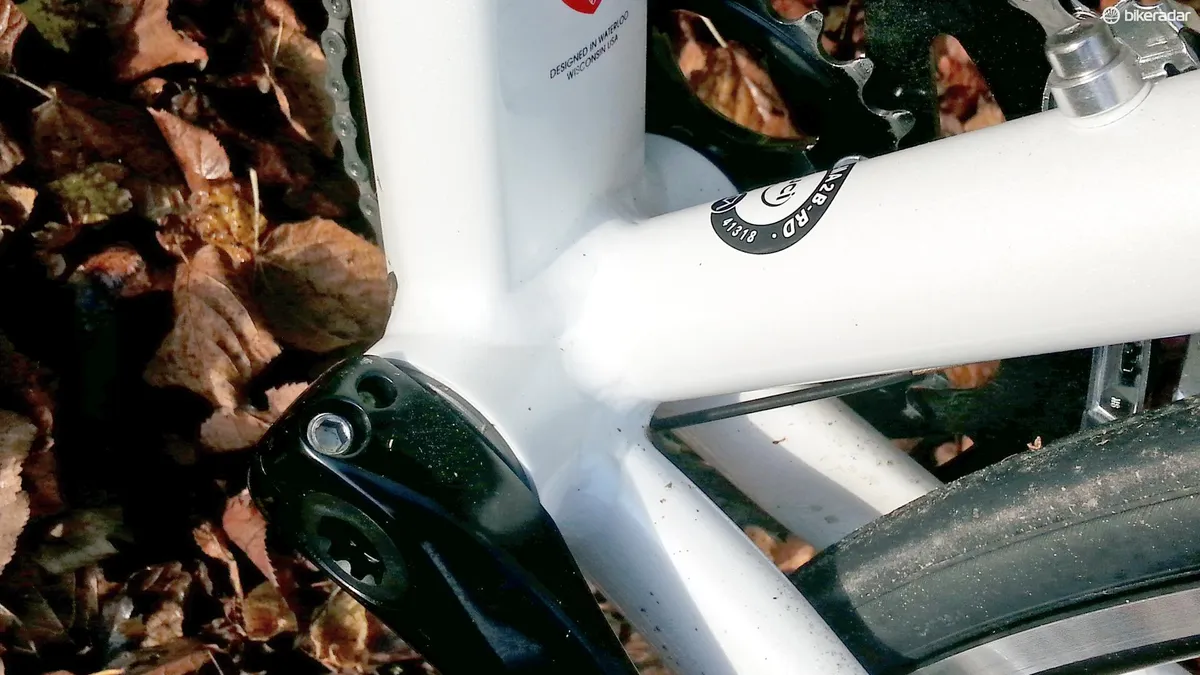Thanks in part to its association with That Texan and a long pedigree of superbly performing bike models, the Madone name is one of the best-known in road cycling. It’s perhaps a bit of gamble then for Trek to slap the branding of its most famous carbon bike on an aluminium-framed machine – but has it paid off?
The sub-£1,000 price point is one of the most hotly contested. With an update to 11-speed Shimano 105 shifters and a price drop to £900 for 2015, the Madone 2.1 holds its own against online-only competition. It’s a solid bike for those who aspire to own the Madone label without handing over £5,900 for the carbon version.
Related: Best bikes under £1,000
- Highs: Decent gearing, handles well, do-it-all geometry, stiff frame
- Lows: Chatters over rough roads, cut-price brakes, a bit heavy
Ride and handling: buzzy but reliable
In Trek’s world, we’ve got the Domane for comfort, the Emonda for climbing and the Madone for racing fast – but the aluminium 2.1 isn’t really a flat-back, head-down racer. The H2 geometry means a taller head-tube (150mm for our 54cm size) for a more upright position than the carbon H1 models. It’s comfortable without stretching, you can tuck low easily and you don’t feel like you’re going backwards when sitting up.
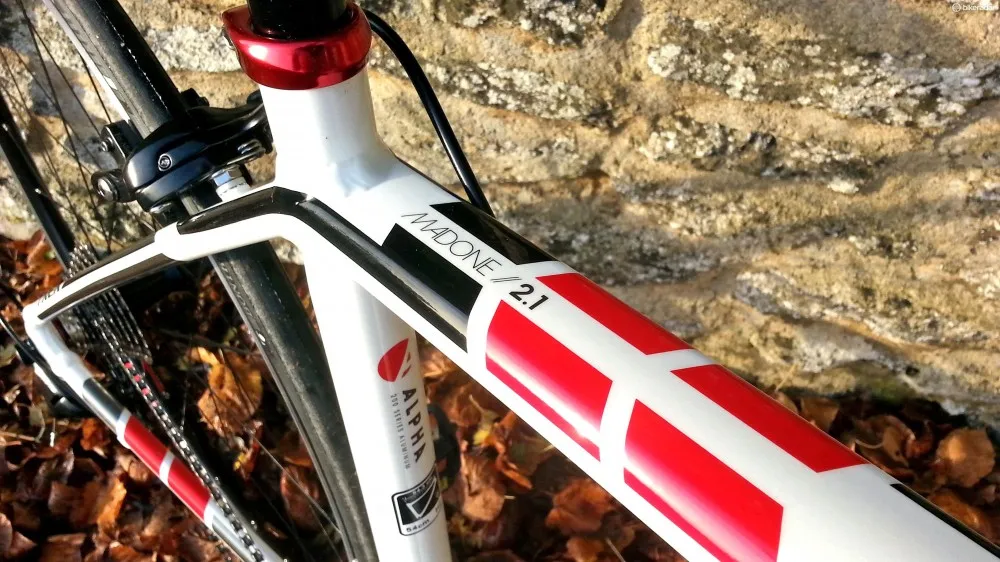
It's officially a Madone, but not as we know it
This means a do-it-all setup that enables you to get on with riding and offers assured control in almost every scenario. Whether you're whipping around tight bends, holding stable in crosswinds or adjusting a line when flashing downhill, the 2.1 offers fuss-free handling that’s neutral and reliable.
This isn't to damn it with faint praise though. Lack of excitement when it comes to handling isn’t a bad thing – you can hold plenty of speed around corners, descend with confidence and relax to enjoy riding.
Unfortunately, the ride quality can endanger that fun at times though. We’ve got a feeling Trek had an image of the bike zipping along a perfectly smooth highway when the 2.1’s frame was designed.
Take the Madone for a spin on good roads it feels sensational, holding its speed well despite the resistance of fairly heavy wheels that make accelerations suffer. Whether or not the internal cabling and flat-backed KVF (Kammtail Virtual Foil) down tube shape aid aerodynamics, it certainly feels fast and satisfying when you’re pushing towards a PB.

Internal cabling is impressive at this price
On the other hand, rougher surfaces really dent the fun, the carbon blades of the tapered fork doing little to calm the chattering vibrations through the frame at the front end. Descending on imperfect lanes proved the biggest worry, with jolts forcing bum and saddle separation and the continued staccato vibrations then battering the backside as the bike skittered downwards – even with only 110psi in the tyres.
This isn't going to happen every time you take on a descent, but it’s a pity that the well-behaved and otherwise planted handling can sometimes come unstuck because of this lack of ride smoothness, creating a tense riding experience. To try and combat this we’d put some suppler 25mm tyres and a carbon seatpost on the upgrade list.
On the uphills though – terrain upon which the Madone performs well for a bike weighing 8.9kg – it's a refreshingly different story. Especially when riding hard, the 2.1’s stiffness gives a quick response and unhampered power transfer when stamping out authority on climbs. With the spot-on geometry and wide gear range, it’s just as adept at helping you spin to a summit too. The front end feels light – and even a bit twitchy with hands on the tops – and while you can feel the weight a bit at the back end, there’s no sense of frustration that the bike’s holding you back.
Frame: fancily formed aluminium
The Madone 2.1 uses Trek’s top-grade Alpha 200-series aluminium, which thanks to hydroforming techniques has allowed for the flattened top tube and KVF down tube shapes, the latter of which being essentially an aerofoil shape that’s had the back cut off, increasing stiffness and decreasing weight while aiding aerodynamics.
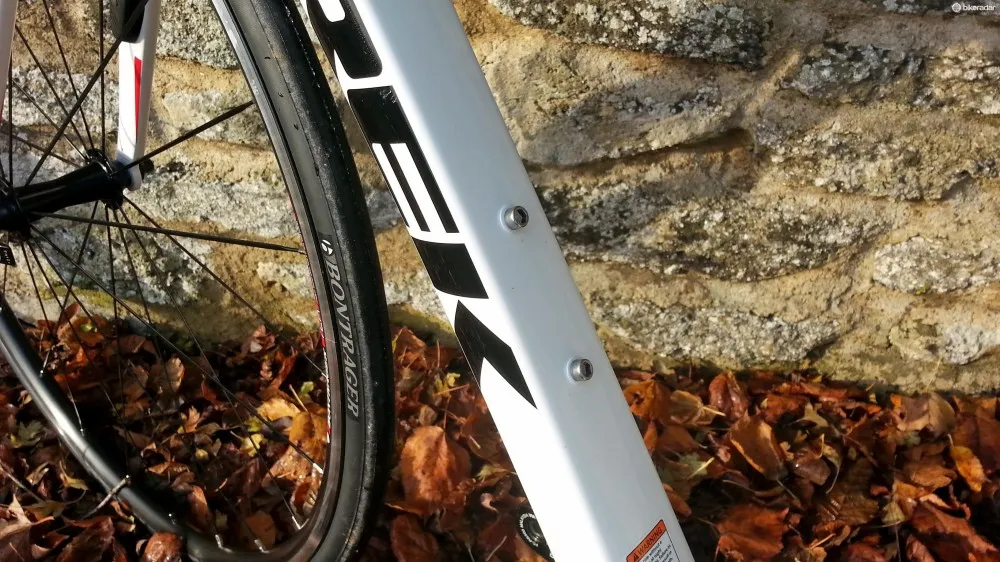
The KVF shaping on the aluminium Madone takes its cue from its carbon-frame brother
The flat shapes also give a smooth, clean look more akin to a carbon frame, though the overall look and shaping remains a far cry from the carbon Madone. The rest of the tubing is a more traditional cylindrical shape and is welded fairly inconspicuously. The oversized BB86.5 bottom bracket means no external bearing cups and allows the wider BB junction that aids stiffness to give the bike its punchy power transfer.
The gear cabling is internally routed, entering at the top of the down tube and exiting at the bottom bracket for the rear derailleur. The rear brake takes a more conventional course under the top tube. This isn’t really too much of a disappointment – as any internal routing at this price is a bonus – but it just reminds you far removed the alloy Madone is from its illustrious namesake.
The head tube is tapered for increased front-end stiffness, which was remarkably solid throughout testing. The accompanying fork features carbon blades, complete with KVF trailing edges, and an alloy steerer – standard at this price point. It also includes a built-in SpeedTrap module for transmitting speed and distance data to a head unit via a Trek computer sensor and spoke-mounted magnet. In addition the 2.1 comes complete with mudguard mounts on fork and frame.
Equipment: savvy selections for 11-speed value
For 2015, the Madone 2.1 makes the leap to 11-speed with Shimano 105 shifters, allowing a wide, largely gap-free gear range when accompanied by the matching 11-28 105 cassette. There’s no skimping on the derailleurs either, which are 105 too, though there’s an RS500 five-bolt 50/34 compact crankset rather than the gorgeous new four-bolt design that’s trickled down from Dura-Ace and Ultegra. Shifting performance was flawless throughout and until Shimano’s high-end groups go 12-speed, there’s little to recommend them over these workhorse components.
Our only criticism of the drivetrain is in the internal BB bearings, which became sticky after a few weeks, stopping the cranks from turning as freely as they should. The brakes are also a bit disappointing, the un-branded calipers lacking the power of Shimano’s versions.
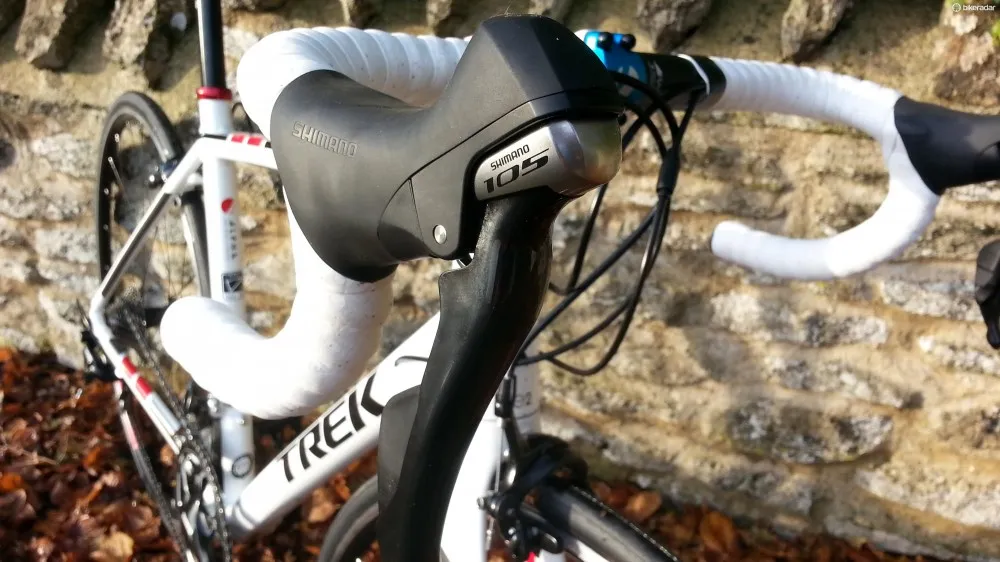
11-speed 105 on a £900 bike shows Trek's buying power
The 2.1 is supplied with Bontrager’s TLR tubeless-ready wheels, which have low-profile, slightly rounded rims that are 19mm wide. Like the rest of the 2.1, they’re solid and free from flex, but aren’t particularly light and didn’t do us any favours in drag sprints from standing, taking a while to get up to speed. They’re a good set of training wheels, but the bike could really fly on the flats and hills with an upgrade to a lighter set.
The Bontrager R1 Hard-Case Lite tyres, meanwhile, are 23mm wide and seemed fairly puncture prone, causing us grief on a few occasions.
The remainder of the finishing kit also comes from Trek’s component brand. The simple alloy seatpost has a red anodised clamp that matches the seat collar, gear hanger, odd headset spacer and stem top cap, giving a classy look. The stem itself is white to match the frame, but comes with a blue anodised faceplate. The bars are standard 31.8mm with a comfy compact drop, wrapped in white gel cork tape, which quickly became grubby.
The Bontrager Paradigm 1 saddle features a central cutout and was surprisingly comfy despite its rather squidgy padding, though an upgrade to something slightly harder might benefit riders going long.
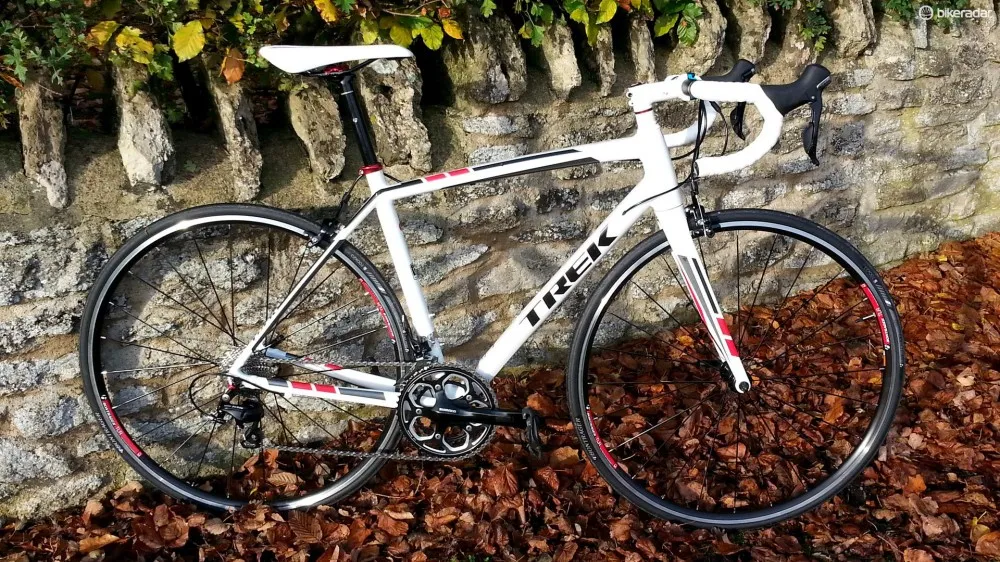
So is the 2.1 really a Madone? No. It’s a fine aluminium bike that shows off Trek’s usual quality, but it’s so distant from the carbon models that it’s not really comparable. Sadly, the fact it is branded as such – inviting unfair comparisons – doesn’t do the 2.1 any favours.
When it comes down to it, the occasionally harsh ride is the one characteristic that poses the biggest question for potential buyers – do you really need the benefit of internal cabling and a more aero down tube for the kind of riding you’re doing?
If you’re going to be racing and want every ounce of power you can get your legs on, it may well be the winning choice, though it’s up against stiff competition from the likes of Giant and Boardman at this price point. If you want all-day, long-ride comfort or value distance over speed go for Trek’s Domane instead.
Check out the gallery above for more pictures of the Trek Madone 2.1.
Looking for a new bike? Get more buying advice from fellow riders in our forum. Head here to join the discussion.
